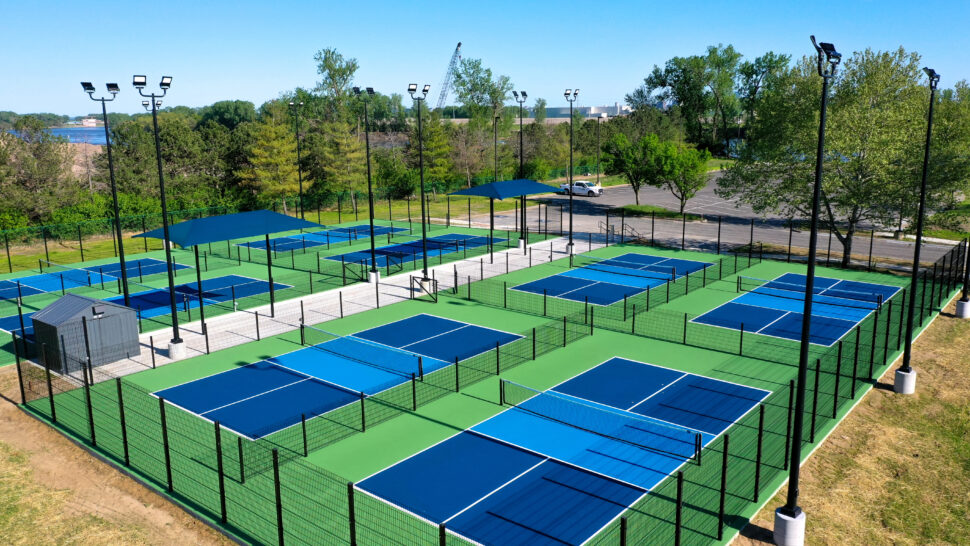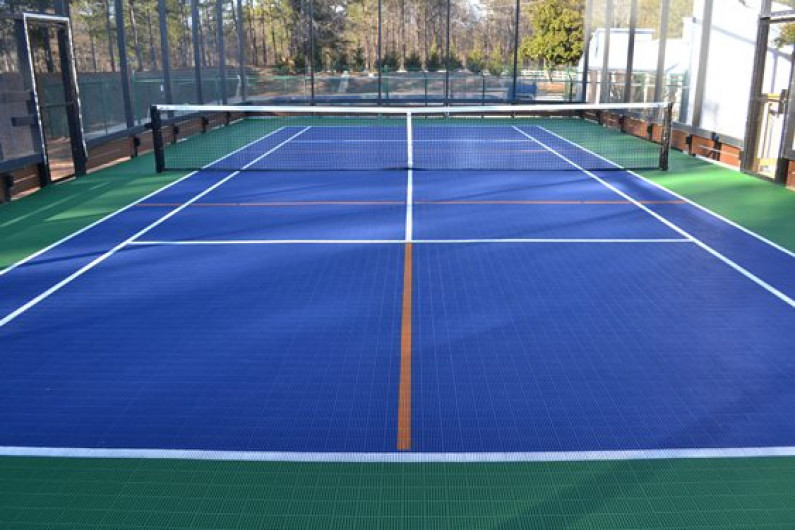Navigating Regulations for Pickleball Court Building in Your Area
Constructing a pickleball court in your area requires a nuanced understanding of various regional regulations, consisting of zoning legislations, building licenses, and safety and security criteria. Engaging with neighborhood authorities and the neighborhood is crucial for guaranteeing conformity and cultivating support.
Recognizing Local Zoning Regulations
When taking into consideration the building of a pickleball court, understanding regional zoning laws is essential to guaranteeing conformity and avoiding potential lawful issues. Zoning guidelines dictate exactly how land can be made use of and typically consist of specs associated to recreational facilities. These laws can differ considerably by community, affecting aspects such as court positioning, sound, size, and illumination degrees.
Prior to starting building, it is important to speak with the regional zoning board or planning department to establish the certain laws that put on your property. Specific areas might restrict leisure activities, while others might call for details permits or adherence to particular guidelines. It is likewise essential to consider obstacles, which identify just how much frameworks must be from home lines or other structures.
Additionally, exclusive advancements, such as homeowner associations (HOAs), might enforce their very own guidelines pertaining to the construction and use pickleball courts. Comprehending these regulations can prevent pricey modifications or litigation down the line. Engaging with local stakeholders and neighborhood members can offer useful insights and foster support for your project, making sure that it lines up with the area's expectations and needs.
Acquiring Necessary Structure Allows
How does one navigate the complexities of obtaining necessary structure licenses for a pickleball court? Commonly, you will require to send a comprehensive site strategy that lays out the suggested court dimensions, materials, and format.

When licenses are acquired, it is vital to stick to any kind of assessment routines and needs throughout the building and construction stage. Keeping communication with local authorities will certainly facilitate a smoother approval procedure and help avoid prospective problems. By thoroughly preparing and comprehending the allowing landscape, you can efficiently navigate the complexities associated with creating a pickleball court while staying certified with all regional regulations.

Assessing Environmental Influence
When planning the building and construction of a pickleball court,An extensive analysis of ecological effect is necessary (Pickleball court construction). This assessment helps determine possible results on neighborhood ecological communities, water resources, and neighborhood aesthetics. Secret variables to think about consist of website option-- making certain that the court is not developed on ecologically delicate land, such as wetlands or environments for endangered types
Dirt stability and drainage patterns need to be assessed to prevent disintegration and water pooling, which might negatively influence bordering vegetation and wildlife. In addition, the choice article of materials is crucial; choosing sustainable and environment-friendly options minimizes ecological damage.
The implementation of reliable stormwater management practices is one more important element, as it aids mitigate overflow and sedimentation. Involving with regional environmental companies can give valuable understandings into regulations and best methods details to your location.
Last but not least, community input can be valuable in comprehending any local environmental worries and cultivating support for the project. By carrying out an extensive ecological influence evaluation, stakeholders can ensure that pickleball court building lines up with lasting practices and contributes favorably to the community's ecological health and wellness.
Following Security Standards
Making certain compliance with security standards is vital for the successful building and construction and operation of a pickleball court. Following well established safety laws reduces the risk of injuries and mishaps, guaranteeing a safe and secure atmosphere for gamers.
Key safety criteria consist of appropriate court measurements, surface materials, and lights needs. The court must fulfill the official dimensions of 20 feet large by 44 feet long for increases play, with suitable barrier zones to prevent injuries from errant rounds. Pickleball court construction. The surface must be built from non-slip materials to boost traction and minimize the likelihood of falls
Additionally, lighting should suffice for evening play, providing consistent lighting to prevent darkness that can hinder exposure. Neighborhood structure codes might additionally dictate specific needs for fencing and internet height to guarantee player safety and security and stop unapproved accessibility to the court location.
Routine inspections and maintenance are necessary to maintain these requirements gradually. By prioritizing safety compliance, court proprietors my link not only shield players yet also cultivate a favorable online reputation within the community. This dedication to safety and security can motivate better involvement and pleasure of the sporting activity, ultimately adding to its growth and sustainability.

Engaging the Area in Planning
Area involvement in the drawing board of pickleball court building can considerably improve the task's general success. Engaging neighborhood residents and stakeholders fosters a sense of ownership and urges joint decision-making, which can bring about more comprehensive assistance for the initiative.
To properly include the community, organizers need to start public meetings or workshops, offering a system for locals to voice their opinions and choices concerning area, style, and amenities. Surveys and comments types can also be used to gather understandings from a bigger audience, ensuring that varied perspectives are taken into consideration.
In addition, developing a community consultatory board can facilitate recurring conversations and address concerns throughout the planning procedure. This board can consist of agents from numerous demographics, such as local institutions, entertainment organizations, and neighborhood watch, thereby magnifying area depiction.
Effective communication is essential; updates concerning the task need to be routinely shared by means of newsletters, social networks, or regional publications. By focusing on area interaction, organizers can grow interest, mitigate potential opposition, and create a pickleball facility that genuinely resonates with neighborhood worths and needs. This collaborative technique not just enhances the project but also reinforces community connections.
Conclusion
In final thought, navigating the complexities of pickleball court building and construction requires an extensive understanding of local policies, consisting of zoning legislations, building authorizations, and security criteria. By adhering to these guidelines and promoting collaboration, successful application of pickleball courts can be attained, promoting leisure opportunities and community wellness.
Constructing a pickleball court in your area requires a nuanced understanding of various neighborhood policies, consisting of zoning regulations, building permits, and safety and security requirements.When thinking about the building and construction of a pickleball court, comprehending local zoning legislations Click This Link is vital to making certain conformity and avoiding prospective legal issues. By thoroughly preparing and comprehending the allowing landscape, you can efficiently navigate the complexities involved in constructing a pickleball court while continuing to be compliant with all regional laws.
In conclusion, navigating the complexities of pickleball court building necessitates a thorough understanding of neighborhood guidelines, including zoning laws, building permits, and safety requirements. By adhering to these guidelines and promoting partnership, successful implementation of pickleball courts can be attained, advertising leisure possibilities and community health.